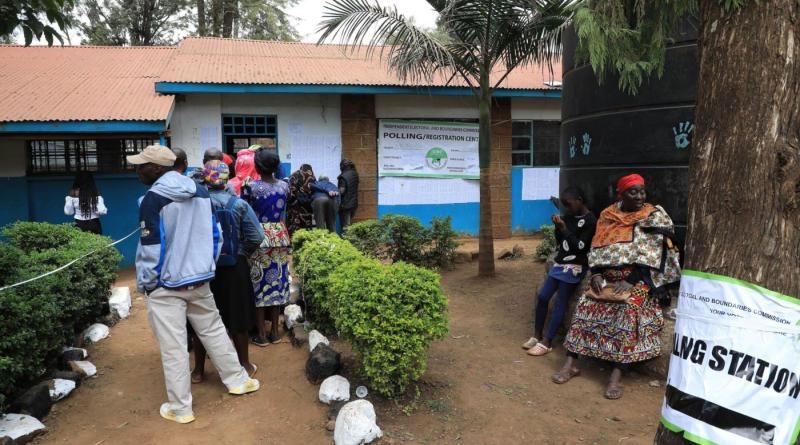In August, Kenya held its fifth general elections since the introduction of multiparty politics in 1991. Four of the 93 registered political parties were green parties. That is a lot for Africa, which only has 22 official green parties. Yet despite a young population highly concerned with climate change, none of Kenya’s green candidates were elected on their ticket.
Kenya faces myriad environmental challenges, not least the multi-year drought in the northwest linked to climate change. The country has a strong history of involvement with global environmental movements, both grassroots and institutional. Forty-five years ago, Africa’s first female Nobel Prize winner, Wangari Maathai, launched the Green Belt Movement, calling on women to plant trees and nurture their local environment. It became a force for women’s rights in Africa and for holding Kenya’s President Daniel Arap Moi to account. Nairobi is also home to the UN Environment Programme, founded in 1972, and the dozens of environmental think tanks and research bodies that cluster around it.
With this history, why do Kenya’s green parties remain on the fringes?
Climate change not a priority for voters
According to Gloria Michira, secretary for environment for the United Green Movement Kenya, green parties lack impact in the country’s electoral process because voting tends to be based “on tribe and personal interests” rather than “tangible issues such as climate change and environmental degradation”.
Kenya has an estimated 42 ethnic groups. With the delineation of county boundaries within Kenya leaning towards balkanization, ethnonationalism tends to define how votes are cast. Since independence in 1963, the country has had five presidents. Three, including the outgoing Uhuru Kenyatta, are from the Kikuyu tribe, which comprises 17% of the population, more than any other. The remaining two, including presently sworn in William Ruto, are from the Kalenjin community, the third largest in the country.
When we discuss issues related to matters touching on climate change, for example, people view it as a utopian preoccupationIsaac Kalua, founder and chair of the Green Thinking Action Party
Electioneering in Kenya tends to focus on local issues, explains Professor Izael Pereira Da Silva, deputy vice-chancellor of research and innovation at Nairobi’s Strathmore University Business School, and board member of the Kenya Climate and Innovation Centre. “Within the local political ecosystem, candidates choose to singularly focus on the basic issues such as garbage collection and dumpsite management, and avoid discussing weighty matters that touch on the green agenda,” he tells China Dialogue.
Isaac Kalua, founder and chair of the Green Thinking Action Party – one of Kenya’s four green parties – echoes this view. Issues like health, work, education and safety are of more interest to the average Kenyan voter, Kalua tells China Dialogue. “So, when we discuss issues related to matters touching on climate change, for example, people view it as a utopian preoccupation.”
Green parties remain on the fringes of electoral politics in almost all African democracies. The only major breakthrough for a green party on the continent was Rwanda’s Democratic Green Party which won two seats in the 2018 general election. It was the first time any opposition candidates had won seats in Rwanda’s parliament.
Kenyan youth disillusioned with politics
In contrast to the population as a whole, Kenya’s young people are highly concerned about climate change. According to a survey published by the Ichikowitz Family Foundation in June 2022, 94% of 18 to 24 year old Kenyans believe their government should be doing more to adopt green energy; 88% expressed concern that climate change could worsen crop infestation and destruction; and 85% stated that they are “actively working to reduce their carbon footprint”. This concern is present in young people across the continent. The Ichikowitz Family Foundation survey showed that 70% of Africa’s youth are concerned about climate change, while less than half are satisfied with how their leaders are tackling the issue.
Just under 30% of Kenya’s population are aged between 18 and 34, according to the 2019 national census. As a demographic, these 13.8 million people are one of the least likely to vote. The numbers of registered voters in this group reportedly fell by 5% compared to 2017.
The relatively low turnout of young Kenyan voters may stem from disillusionment with politics more broadly. A 2020 study of their attitudes towards politics and the country’s future found corruption and unemployment topping their concerns. At least a third of Kenya’s youth who are eligible to work are jobless.
We were expecting six million new registered voters but only three million turned upEast African weekly newspaper
Hilda Muthoni, 32, is a dentist in lower Kabete, a verdant locale 12km west of Nairobi’s central business district. She tells China Dialogue that she didn’t vote this year because doing so would not improve her living standard. “It’s apparent that thieves are given a free pass to run for public office,” she said. “One would not expect change that we are looking for to happen if those are the choices on the ballot.”
Jakaya Kikwete, former president of Tanzania who led an observer mission during the 9 August elections, recently told media that the low turnout was worrying for Kenya whose electoral processes were largely transparent compared with other African countries.
“We were concerned about the low registration of younger voters. We were expecting six million new registered voters but only three million turned up. Probably there are concerns among the youth that participating in elections is not worthwhile,” the East African weekly newspaper reported Kikwete as saying.
Hope for a greener political future?
Agostino Neto, a parliamentary candidate for the United Green Movement Party in the August polls, is more optimistic.
“The future of green parties in Kenya is bright if the economic momentum stirring Kenya to becoming an upper middle income economy by 2030 is maintained,” he tells China Dialogue. “A sizable middle class will gradually come of age whose worries will transcend matters coalescing around hand-to-mouth affairs, engaging instead on tangible issues fixated on, say, climate change.”
The economy is indeed growing strongly, but inequality remains a major issue. According to Oxfam, Kenya is one of the world’s most unequal economies with less than 0.1% of the population – that is 8,300 people – owning more wealth than the bottom 99.9% – equivalent to 44 million people.
Martin Ogindo of the Green Congress of Kenya says significant progress has been made towards the goals of green parties despite the parties themselves not assuming power. Successive governments since the 1990s have been sensitive to environmental matters, Ogindo points out.
Indeed, Uhuru Kenyatta’s outgoing administration achieved major milestones in the clean energy sector, with renewable sources now accounting for 80% of total power-generation capacity. A signature legacy of the Kenyatta administration also includes the Lake Turkana Wind Power Project, the largest biggest wind power plant in sub-Saharan Africa. Looking ahead, the country is targeting 100% clean energy use by 2030, and 100% access to clean cooking technology by 2028.
But until green parties in Kenya discover ways to connect with the average voter over their green agenda, the prospects for a greener future for the country will remain narrowly defined.







